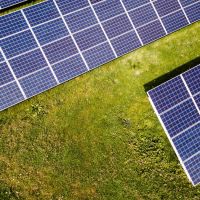Contact us
Our Services
View all



- Our Services Our Offering

The Taking Climate Action label

CO2logic's SME climate program
Be proud and share your climate achievements with Taking Climate Action label.
Find out more
- Our Services Taking Climate Action label

The Taking Climate Action label

CO2logic's SME climate program
Be proud and share your climate achievements with Taking Climate Action label.
Find out more
- Our Services CO2logic’s SME climate program

The Taking Climate Action label

CO2logic's SME climate program
Be proud and share your climate achievements with Taking Climate Action label.
Find out more

The Taking Climate Action label

CO2logic's SME climate program
Be proud and share your climate achievements with Taking Climate Action label.
Find out more
Taking Climate Action label
View all



- Taking Climate Action label Taking Climate Action label

The Taking Climate Action label

Labelled companies
Be proud and share your climate achievements with Taking Climate Action label.
Find out more
- Taking Climate Action label Labelled companies

The Taking Climate Action label

Labelled companies
Be proud and share your climate achievements with Taking Climate Action label.
Find out more

The Taking Climate Action label

Labelled companies
Be proud and share your climate achievements with Taking Climate Action label.
Find out more
Our Clients
View all



- Our Clients Case Studies

Case Studies

Labelled companies
Be proud and share your climate achievements with Taking Climate Action label.
Find out more
- Our Clients Labelled companies

Case Studies

Labelled companies
Be proud and share your climate achievements with Taking Climate Action label.
Find out more

Case Studies

Labelled companies
Be proud and share your climate achievements with Taking Climate Action label.
Find out more
News and Insights
View all



- News and Insights CO2Logic Blog

The Taking Climate Action label

CO2logic's SME climate program
Be proud and share your climate achievements with Taking Climate Action label.
Find out more
- News and Insights CO2Logic News

The Taking Climate Action label

CO2logic's SME climate program
Be proud and share your climate achievements with Taking Climate Action label.
Find out more

The Taking Climate Action label

CO2logic's SME climate program
Be proud and share your climate achievements with Taking Climate Action label.
Find out more
Our Services
Taking Climate Action label
Our Clients
News and Insights

The Taking Climate Action label

CO2logic's SME climate program

The Taking Climate Action label

Labelled companies

Case Studies

Labelled companies

The Taking Climate Action label

CO2logic's SME climate program


